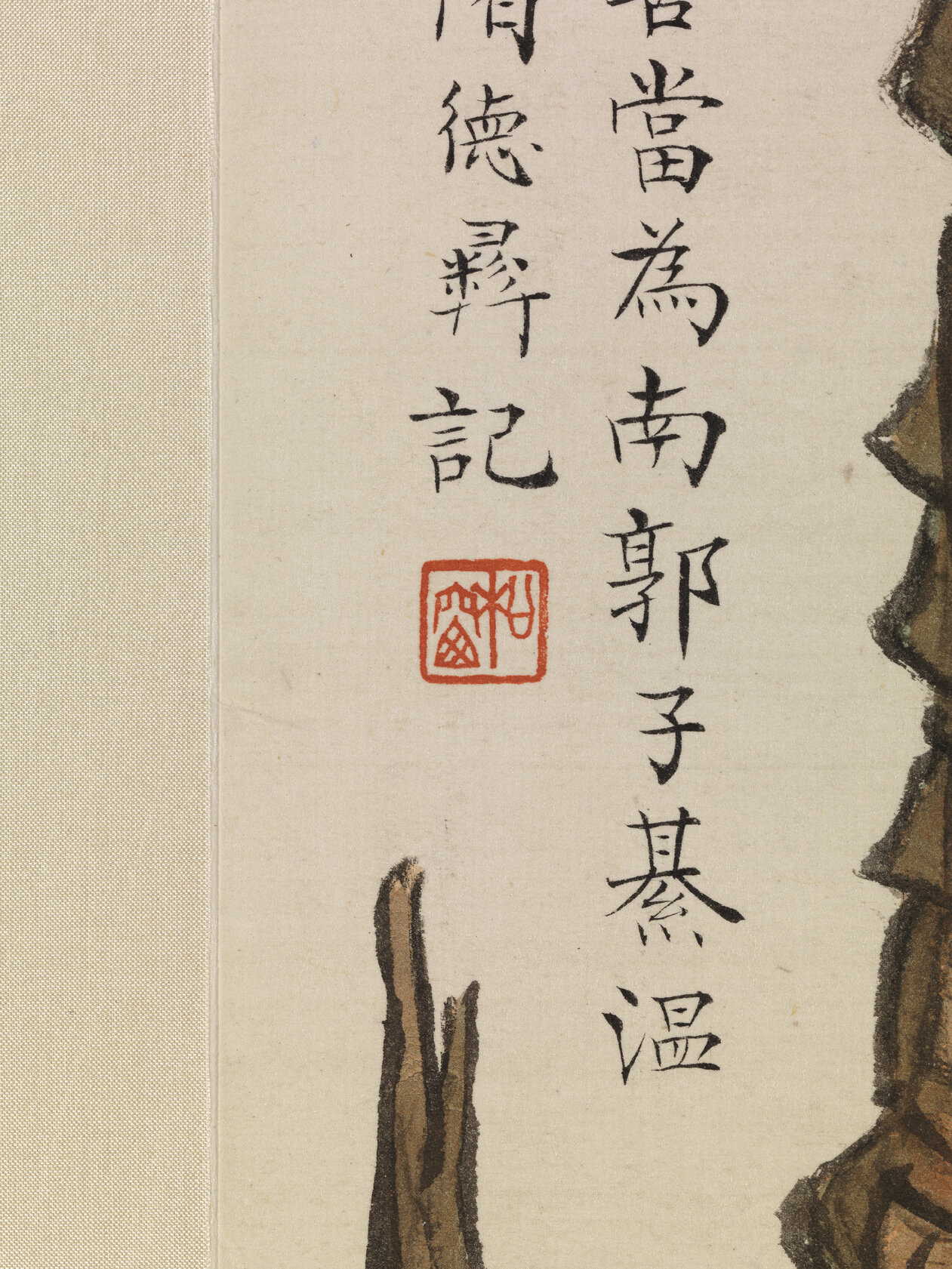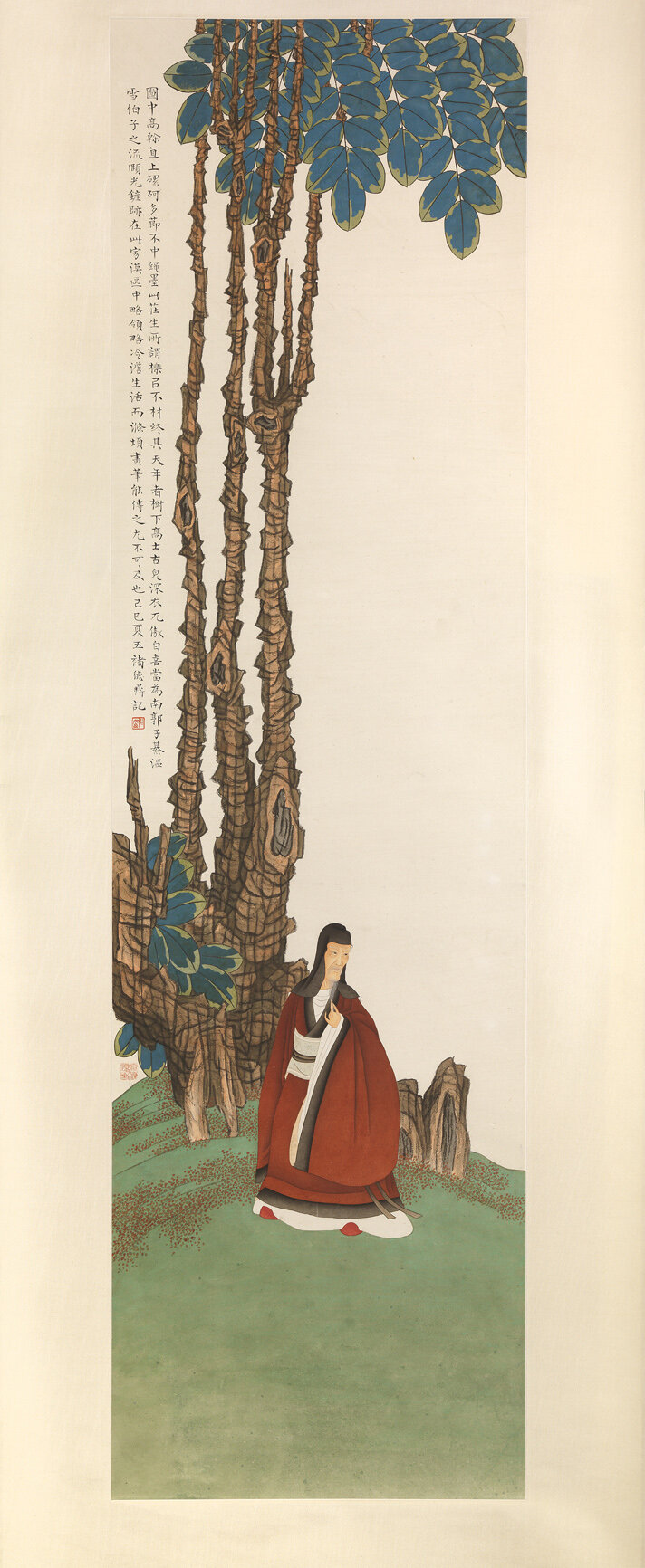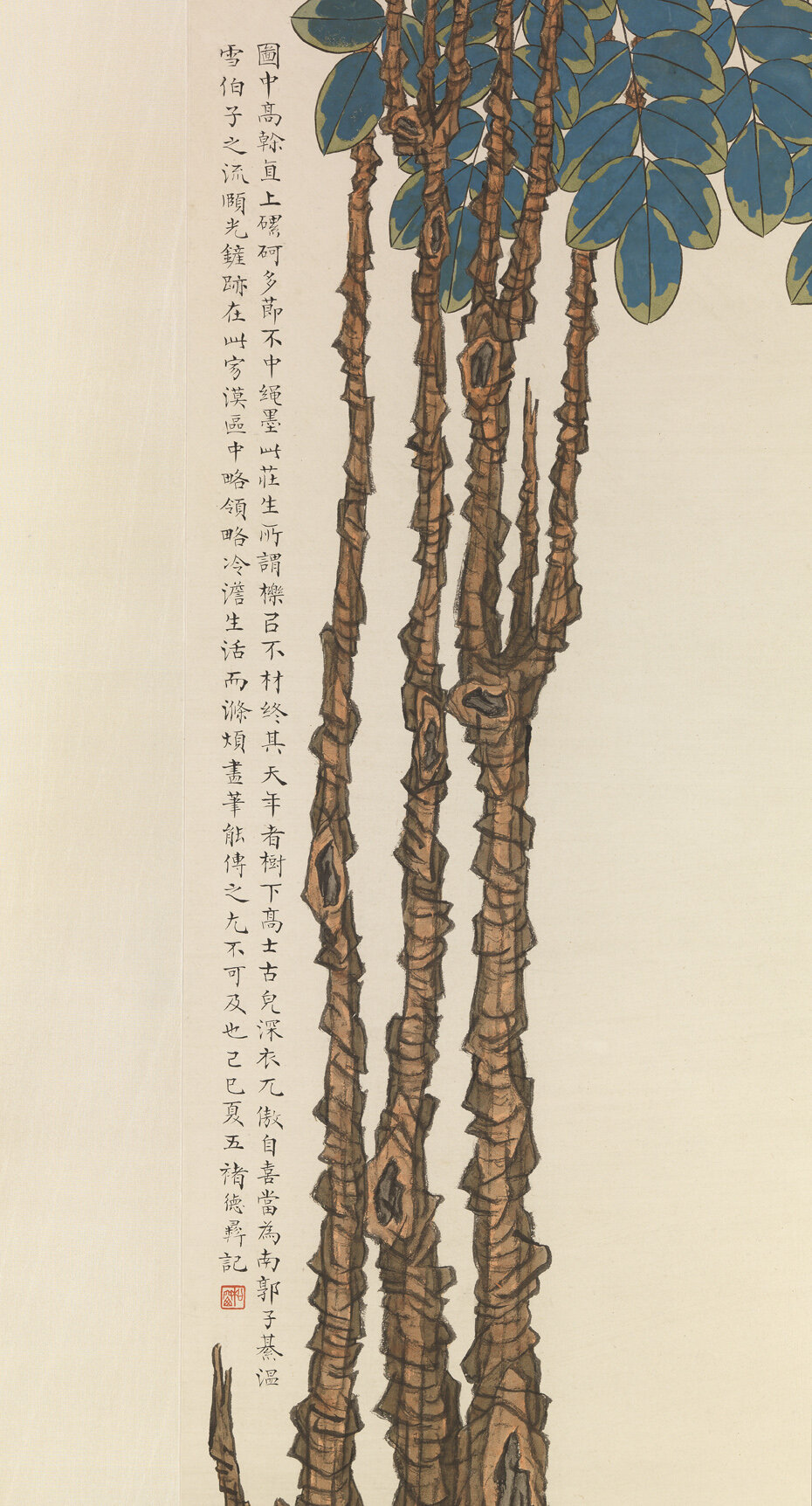Yu Ming 俞明 (1884-1935)
A hanging scroll in ink and colours on paper; an old immortal under a tree, circa 1929.
With one seal of the artist: Yu Difan hua; and one seal of the calligrapher: Song Chang.
Painted area: 122 x 33 cm (48 x 13 inches).
An archaic scholar in red robes beneath three tall, gnarled trunks, with inscription by Chu Deyi (1871-1942).
The elegant gentleman smoothes out his beard under a canopy of brilliantly coloured leaves emerging from craggy, twisted branches; his angular, wizened hands and face contrast with his billowing robes and the undulating grassy mound beneath him. The inscription reads:
In this picture, a towering tree juts straight up, powerful, with many knots, not conforming to ordinary proportions. This is the oak tree written of by Zhuangzi, which lives out its full life-span because of its not being the sort of material found useful [by carpenters].
Standing beneath the tree there is a noble scholar of the ancient type, with full robes, proudly happy in himself. He seems to belong to the class of Nanguo Ziqi, or Wenxue Bozi, hiding his light within, keeping his movements untraceable, in the midst of this solitary, remote realm. Having somewhat grasped his dispassionate, serene life, Difan’s brush is capable of transmitting his image, and could not be more exceptional.
Written in the fifth month of summer in the jisi year [1929] by Chu Deyi.
Ex collection: M.K. Lau, Hong Kong.
Published: Hong Kong Museum of Art, Tradition and Innovation – Twentieth Century Chinese Painting, Hong Kong, 1995-1996, no. 16 (also exhibited: Singapore Art Museum, Singapore; British Museum, London; Museum für Ostasiatische Kunst, Cologne);
Shi Jh Tang, Mist & Clouds in the Capital – Northern Painting Circles During 1911-1949, Taipei, 2002, p. 81;
The Taiwan Antique Dealers’ Association 2002 Exhibition catalogue, Chang Foundation, Taipei, October 2002, p. 145.
Yu Ming, zi: Jingren; hao: Difan, from Huzhou (modern Wuxing, Zhejiang), was a professional landscape and figure painter working in Shanghai. Having studied the styles of Chen Hongshou (1598-1652) and Ren Yi (1840-1895) in his youth, he became a guohua painter, mixing classical and modern techniques to create a fresh, succinct style of his own. He is known for his classical figure painting, particularly court ladies and historical portraits, executed in exaggerated bright colours but with elegant, simple brushwork. Here, the painting is left unsigned by Yu, as was typical of his work; only his seal is purposefully placed, to leave free space for the colophon. The inscription is by Chu Deyi, zi: Shouyu, Songchuang; hao: Litang, a seal carver, calligrapher and antiquarian originally from Yuhang, Zheijiang, who wrote many colophons for Yu mostly in the late 1920s. The collaboration between Yu Ming and Chu Deyi in creating the work suggests that the date of the painting closely aligns with the colophon date of 1929.




